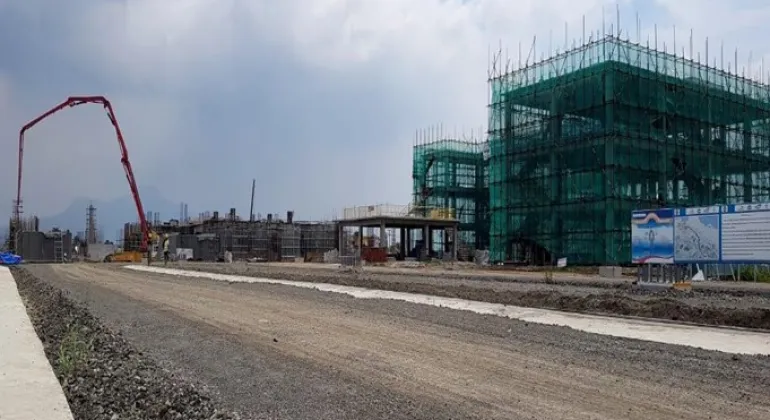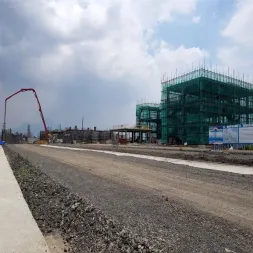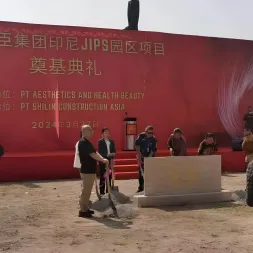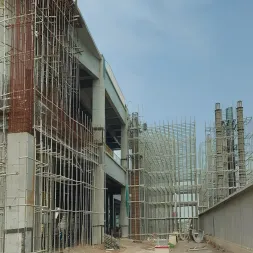
The Construction of High-Speed Train Stations: A Modern Marvel
High-speed train stations are pivotal components of modern transportation infrastructure, facilitating rapid travel across vast distances and promoting economic growth. As cities around the world embrace rail as a sustainable alternative to road and air travel, the design and construction of these stations becomes increasingly critical. This article explores the key aspects involved in building high-speed train stations, from planning and design to construction challenges and benefits.
The Role of High-Speed Train Stations
High-speed train stations serve as vital hubs connecting urban areas and facilitating efficient travel. They are designed to accommodate high volumes of passengers and provide seamless transfers between various modes of transportation, including local transit, buses, and taxis. A well-designed station enhances the travel experience, promotes local commerce, and supports regional development.
Planning and Design
The planning phase for a high-speed train station involves multiple stakeholders, including government agencies, transportation authorities, urban planners, and architects. Key considerations during this phase include:
Location: Stations must be strategically placed to optimize accessibility and connectivity. Proximity to city centers, airports, and major highways is crucial.
Capacity: Anticipating passenger volumes is vital for designing facilities that can handle peak traffic without congestion. This includes considerations for ticketing areas, waiting lounges, and platforms.
Sustainability: Modern high-speed train stations often incorporate eco-friendly design elements, such as energy-efficient systems, green roofs, and the use of sustainable materials.
Architectural Vision: The aesthetic appeal of the station is important for both functionality and branding. Iconic designs can become landmarks, attracting visitors and boosting tourism.
Construction Process
The construction of a high-speed train station is a complex and multi-faceted process, typically involving the following stages:
Site Preparation: This includes clearing the site, conducting geotechnical assessments, and preparing the ground for construction.
Foundation Work: Given the weight and scale of train stations, robust foundations are essential. Engineers assess soil conditions and may use deep foundations or pilings to ensure stability.
Superstructure Development: The main structure of the station is built, including platforms, concourses, and supporting elements. Materials like steel and concrete are commonly used for durability.
Integration of Systems: High-speed train stations must incorporate advanced technology for ticketing, security, and passenger information systems. This integration is crucial for efficiency and safety.
Landscaping and Access: The surrounding area is developed to enhance accessibility, including walkways, bike paths, and parking facilities. Landscaping is also essential for aesthetics and environmental impact.
Challenges in Construction
Building high-speed train stations presents unique challenges, including:
Urban Constraints: Many stations are located in densely populated areas, requiring careful planning to minimize disruption and accommodate existing infrastructure.
Budget and Time Management: Large-scale projects often face budget overruns and delays. Effective project management and stakeholder communication are vital to staying on schedule.
Technological Integration: Incorporating cutting-edge technology for ticketing and passenger services can be complex and requires ongoing maintenance.
Benefits of High-Speed Train Stations
The advantages of investing in high-speed train stations are significant:
Economic Growth: Efficient transportation systems stimulate local economies by attracting businesses and tourism.
Reduced Traffic Congestion: High-speed trains can significantly reduce the number of cars on the road, leading to less congestion and lower emissions.
Enhanced Travel Experience: Modern stations provide amenities that enhance comfort, including shopping, dining, and waiting areas, making travel more enjoyable.
The Role of High-Speed Train Stations
High-speed train stations serve as vital hubs connecting urban areas and facilitating efficient travel. They are designed to accommodate high volumes of passengers and provide seamless transfers between various modes of transportation, including local transit, buses, and taxis. A well-designed station enhances the travel experience, promotes local commerce, and supports regional development.
Planning and Design
The planning phase for a high-speed train station involves multiple stakeholders, including government agencies, transportation authorities, urban planners, and architects. Key considerations during this phase include:
Location: Stations must be strategically placed to optimize accessibility and connectivity. Proximity to city centers, airports, and major highways is crucial.
Capacity: Anticipating passenger volumes is vital for designing facilities that can handle peak traffic without congestion. This includes considerations for ticketing areas, waiting lounges, and platforms.
Sustainability: Modern high-speed train stations often incorporate eco-friendly design elements, such as energy-efficient systems, green roofs, and the use of sustainable materials.
Architectural Vision: The aesthetic appeal of the station is important for both functionality and branding. Iconic designs can become landmarks, attracting visitors and boosting tourism.
Construction Process
The construction of a high-speed train station is a complex and multi-faceted process, typically involving the following stages:
Site Preparation: This includes clearing the site, conducting geotechnical assessments, and preparing the ground for construction.
Foundation Work: Given the weight and scale of train stations, robust foundations are essential. Engineers assess soil conditions and may use deep foundations or pilings to ensure stability.
Superstructure Development: The main structure of the station is built, including platforms, concourses, and supporting elements. Materials like steel and concrete are commonly used for durability.
Integration of Systems: High-speed train stations must incorporate advanced technology for ticketing, security, and passenger information systems. This integration is crucial for efficiency and safety.
Landscaping and Access: The surrounding area is developed to enhance accessibility, including walkways, bike paths, and parking facilities. Landscaping is also essential for aesthetics and environmental impact.
Challenges in Construction
Building high-speed train stations presents unique challenges, including:
Urban Constraints: Many stations are located in densely populated areas, requiring careful planning to minimize disruption and accommodate existing infrastructure.
Budget and Time Management: Large-scale projects often face budget overruns and delays. Effective project management and stakeholder communication are vital to staying on schedule.
Technological Integration: Incorporating cutting-edge technology for ticketing and passenger services can be complex and requires ongoing maintenance.
Benefits of High-Speed Train Stations
The advantages of investing in high-speed train stations are significant:
Economic Growth: Efficient transportation systems stimulate local economies by attracting businesses and tourism.
Reduced Traffic Congestion: High-speed trains can significantly reduce the number of cars on the road, leading to less congestion and lower emissions.
Enhanced Travel Experience: Modern stations provide amenities that enhance comfort, including shopping, dining, and waiting areas, making travel more enjoyable.






